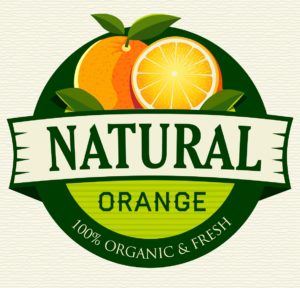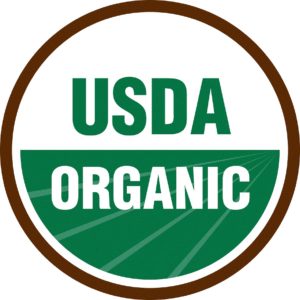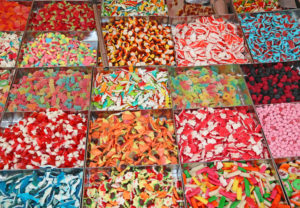These days, more and more people are seeking out healthy choices at the grocery store. And many food companies have taken advantage of this by doing everything they legally can to make us think their food is healthier than it really is.
That’s why you have to be skeptical of everything you read on a food label.
Here are the 7 most common and misleading food label lies, along with what they REALLY mean:
Food Label Lie #1: “Natural” and “All-Natural”

This is probably the single most misleading & deceptive word used on food labels.
Healthy people like you & me will see a label that claims its ingredients are “All Natural,” and we assume that food is healthier than most other foods—made without pesticides, hormones, GMOs, and other artificial ingredients.
Makes perfect sense.
The problem is that the word “natural” has no clear meaning on a food label. It’s unregulated, which means there are absolutely zero laws about what it has to mean.
Heck, even Doritos could call themselves “natural” if they wanted to.
(Spoiler alert: they have.)
Also watch out for the packaging. Food companies like to put lots of green colors and
Food Label Lie #2: “Healthy”
This should be obvious, but it bears repeating.
Just because a food SAYS it’s “healthy” doesn’t mean it is.
It doesn’t mean anything.
Disregard it.

Food Label Lie #3: “Organic”
Now, unlike “natural,” the world “organic” IS regulated—at least, if it carries the official USDA Organic.
If a label says “organic” but doesn’t have the label, I would be very suspicious of that food.
But even if a food IS organic, that doesn’t necessarily mean it’s good for you.
Let’s take a look at the meaning of “organic.” Organic just means that a food is grown without pesticides, antibiotics, etc.
Organic food is not necessarily more nutritious than conventional food. The only thing you can say for sure about it is that it contains fewer toxins in the forms of pesticides and other nasty chemicals.
So, it’s not that “organic” isn’t good. Organic food is almost always better than a non-organic version of that same food.
But just because a food is organic, that doesn’t mean it is necessarily healthy.
Organic macaroni & cheese is still a blood-sugar-spiking calorie bomb…
Organic cake is still full of sugar and other empty calories…
You get the picture.
Food Label Lie #4: “Contains Whole Grains”
First, let’s clarify something. If a food label says that the food “contains whole grains,” then you can rest assured that the food DOES, in fact, contain whole grains.
(It might only be 1% whole grains, but it does have them.)
Some foods are more specific and will tell you that they “Contain 8g of whole grains per serving.” In this case, you can at least be confident that the food has 8g of whole grains per serving.
But here is another problem:
The amount of whole grains (8g in this example) could still be a very small percentage of the food overall. Remember that 1 gram of carbs = 4 calories, so 8g of carbs is 32 calories’ worth of whole grains. If a serving of the food is 250 calories, then that food is only made up of 13% whole grain.
Some food companies even dye their bread with molasses or something like that to look darker so it will appear to be more “whole wheat” than it really is—a blatantly dishonest practice if you ask me.
Finally, I would question the value of eating whole grains at all. Personally I do eat some grains, but I try to limit them in favor of a more paleo-style diet. A better source of carbohydrates, in my opinion, includes more natural foods like sweet potatoes.
Food Label Lie #5: “Low-Fat” and “Fat-Free”
Fortunately, this misconception is on the way out. People are finally starting to realize that fat is NOT the evil demon we thought it was.
But food companies still make this claim on food labels, and people still fall for it.
For the record: just because a food is fat-free does NOT make it healthy and does NOT make it low-calorie.
Here’s a short list of foods that are 100% fat-free:

- Jelly Beans
- Pixy Stix
- Jolly Ranchers
- Sour Patch Kids
- Gummy Bears
- Twizzlers
- Fruit Roll-Ups
- Pure sugar
You get the picture.
Food Label Lie #6: “Gluten-Free”
If you have Celiac disease, obviously “gluten-free” is a pretty important label claim.
But if, like most people, you don’t, then don’t read too much into this claim on a food label.
All it means is the food has no gluten.
Personally, I do try to avoid gluten when I can. I think there are some potential health benefits to avoiding it.
BUT…
“Gluten-free” does NOT mean a food is healthy. It does NOT mean a food is low in calories. And it does NOT mean that food won’t cause digestive issues.
Food Label Lie #7: “High in Protein”
This is similar to the “whole grain” lie above.
Just because a food claims to be “high in protein” does not necessarily mean it’s that high in protein.
In other words, the percentage of protein in the food may not necessarily be that high.
For example, I’ve seen microwave burritos that market themselves as being “high in protein”—and they usually have 12-15 grams of protein. (That’s 48-60 calories’ worth of protein.)
But the whole burrito has 300-400 calories.
That means the burrito is only 8-20% protein.
In my world, that makes it a LOW-PROTEIN food.
The Moral Of The Story
I hope the take-home message is clear:
Don’t trust food companies to tell you what’s healthy and what’s not. Decide for yourself!
Eating healthy is YOUR responsibility.
If you don’t take the time to find out exactly what’s in the food you eat, then you have no one but yourself.
So the next time you’re tempted by a healthy-looking package, turn it over and read the nutrition label. You might just be surprised to discover that the all-natural whole-grain organic cheesecake you’re holding really isn’t all that good for you.